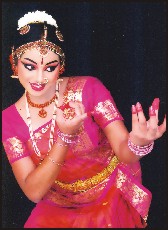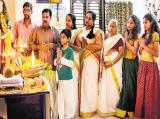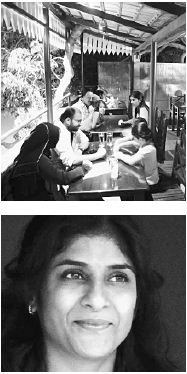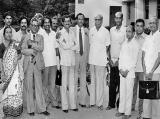
Vaishali has it first for our city
by Sujata Rajpal
Call it destiny or seizing the opportunity but all big things in life are the result of taking the right decision at the right time.
Vaishali Hanumanth, the Managing Partner of DRC Cinemas in Mysuru, is a perfect testimony to the above sentiment. Not only this, such once-in-a-lifetime situations always come disguised in the most innocuous forms such as the driver taking off on that particular day. The golden opportunity to set up the first multiplex in Mysuru knocked at Vaishali’s door when one day she had to drive her father to the office of Dr. C.B. Murthy of B.M. Hospital. The proposal to build and operate a multiplex was offered initially to Vaishali’s father, who runs a Finance company but he had his hands already full. Turning down such an offer on the phone would have been discourteous.
Vaishali sat in Dr. Murthy’s office flipping the pages of a random magazine as the duo got engrossed in the business talk. Dr. Murthy asked her father, “If you can’t do it let your daughter take it.” And the gutsy woman signed the deal without blinking an eyelid and the rest as they say is history which was made on Oct. 1, 2011 when the royal city got its first multiplex located at B.M. Habitat Mall in Jayalakshmipuram.
“Sometimes ignorance is bliss. If I had known about the challenges involved in this high risk industry, perhaps I wouldn’t have taken this project,” says Vaishali, who admits being an intuitive person.
“The challenges have been aplenty right from the construction stage to dealings with distributors to operations. Since the cost of construction was huge, I decided to procure the material and personally supervise the construction which enabled me to bring down the cost of construction drastically. Even though well-wishers warned me about making such a huge Investment in a laid-back city, the response has been encouraging right from the beginning. I never had an iota of doubt about its success. Though laid-back, Mysureans indulge if they get value for money,” believes Vaishali, who is an unadulterated Mysurean.
in a laid-back city, the response has been encouraging right from the beginning. I never had an iota of doubt about its success. Though laid-back, Mysureans indulge if they get value for money,” believes Vaishali, who is an unadulterated Mysurean.
An alumna of CKC School and Marimallappa College, Vaishali graduated in Commerce from JSS College of Commerce. At the age of three-and-half years, Vaishali had her Aksharabhyasam at the Shanthala theatre jointly owned by her grandfather.
“It is interesting that today I am running a multiplex,” Vaishali says dreamily.
DRC changed the definition of entertainment for the residents of Mysuru. When visitors enter the premises, they are awed by the alluring ambience, spic-and-span floor, sparkling clean restrooms and the courteous staff as if everything functions on auto mode. The drive behind the auto mode is the managing partner herself who spends around ten hours every day at her office-cum-second home. “Actually my family calls DRC my first home. This theatre is my passion. I enjoy my work thoroughly,” laughs the doe-eyed woman.
“How do you manage to maintain it so well?” I ask.
“Don’t we take pride in maintaining our house?” she counter questions me. Vaishali fondly recalls the incident when N.R. Narayana Murthy, who had come to watch a movie, complimented her on the impeccable maintenance of the multiplex.
Not the kind to sit back and bask in the glory, Vaishali is constantly scaling up the theatre. When the theatre was started, only one screen was 3D compatible. Now all four screens are 3D compatible.
The spunky woman is up and running everywhere in the theatre premises personally supervising if all is fine in the projector room, ticket counters, snack counters, with the house-keeping and even catching up with the visitors who stop by to say hello.
“I couldn’t have managed this multiplex without the support of my family. I am fortunate to get tremendous family support. My husband and my father are my backbones,” admits the lady with the contagious smile. Her daughter Manasa, is studying Law at Symbiosis Law School, Pune and son Krishna, is a class 12 student at NPS International School.
Fact file on
DRC was started on Oct. 1, 2011
All the four screens are 3D compatible
Average 20 shows are screened daily
Four movies – Force (Hindi), Dookudu (Telugu), Kung Fu Panda (English) and Lifeu Ishtene (Kannada) were screened on the first day
Life of Pi ran for 200 days (the maximum number of days at DRC until now)
The theatre has a total seating capacity of 958
5.6 lakh visitors visited DRC in the first year
In the first eleven months of 2014, 5.86 lakh people visited this multiplex
DRC is built on a total area of 30,625 sqft
Each projector lamp required to screen a film costs Rs. 80,000
Each lamp has a life of 1000 hours
The most delectable Samosas in Mysuru are sold at DRC [I take the liberty to add the last fact as I make my way to the Samosa counter].
source: http://www.starofmysore.com / Star of Mysore / Home> Feature Articles / Friday – April 03rd, 2015







